The Power of Digital Twin Technology in Maritime Operations
Introduction
In the vast and ever-evolving maritime industry, the ability to manage vessels remotely and ensure the highest training and operational efficiency standards has become more crucial than ever. As the digital transformation wave continues to sweep across sectors, the maritime industry stands on the cusp of a revolutionary shift, thanks to the advent of Digital Twin technology. This innovative solution offers a virtual representation of physical vessels, enabling unparalleled insights and control over maritime operations without the constraints of physical presence.
Why Digital Twin Technology?
Imagine having the power to fully understand every component of your vessel, train your crew with the most up-to-date information, and troubleshoot issues before they escalate—all from a remote location. Digital Twin technology makes this possible by creating a dynamic, digital mirror of the vessel, accessible anytime, anywhere. It's not just about visualization; it's about real-time interaction and real-time decision-making based on accurate, live data.
Transforming Maritime Operations
The implications are profound for maritime trainers, vessel managers, and crew members. Crew familiarization, operational and emergency training, troubleshooting, and customized equipment training can now be conducted with a level of detail and efficiency previously unimaginable. The result? Enhanced safety, improved operational readiness, and significantly reduced costs associated with traditional training and maintenance methods.
The Journey Ahead
This blog post will delve into the heart of Digital Twin technology—exploring its benefits, applications, and transformative potential for the maritime industry. From crew training enhancements to operational efficiencies and beyond, we'll uncover how this technology is changing how we manage and interact with our maritime assets and setting a new standard for innovation and safety at sea.
Stay tuned as we navigate the exciting realm of Digital Twin technology, a digital leap forward that promises to redefine maritime operations for the digital age.
Understanding Digital Twin Technology
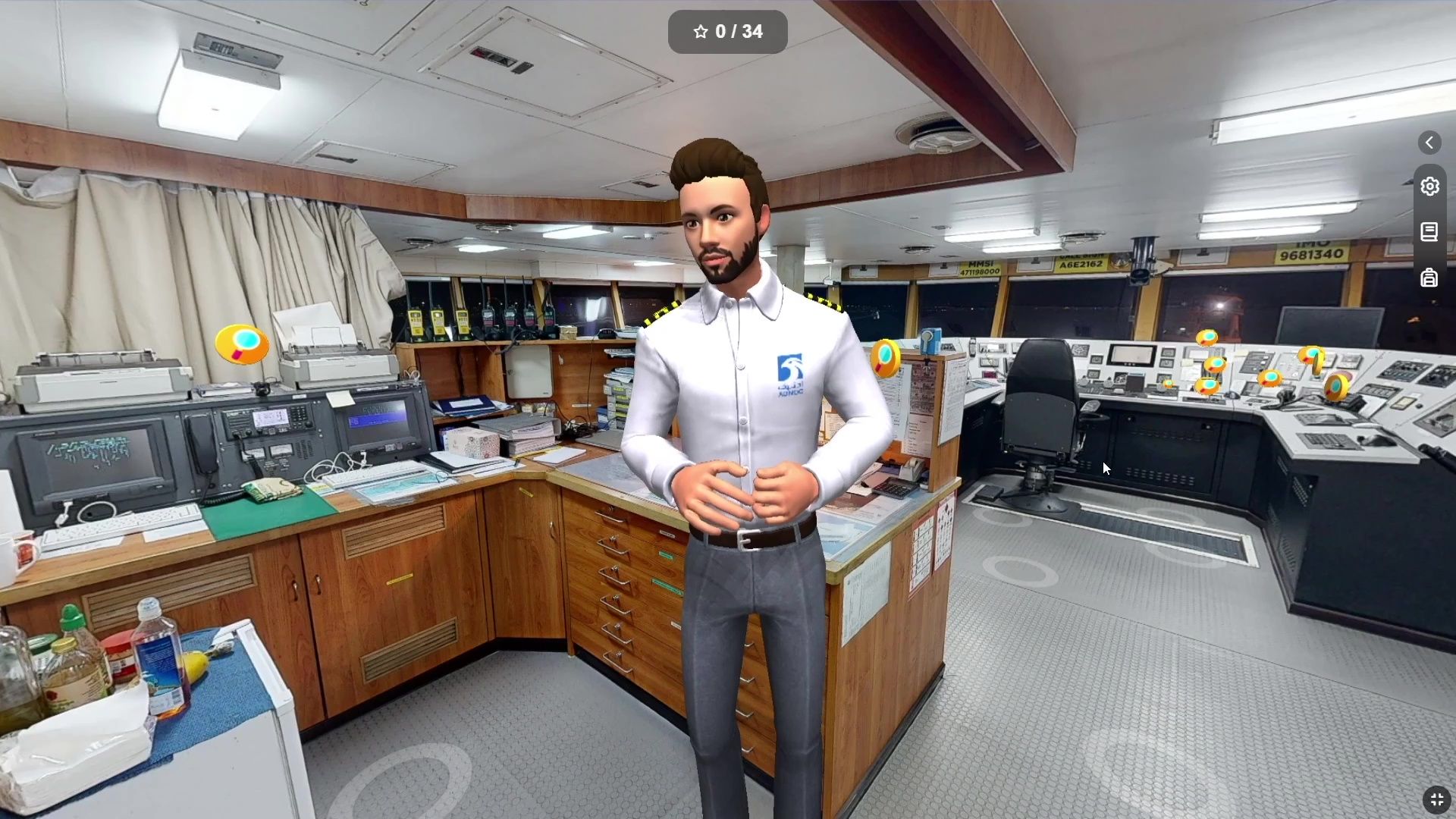
What is Digital Twin Technology?
At its core, Digital Twin technology represents a groundbreaking innovation in the maritime industry, offering a digital replica of physical vessels. This virtual model is not a static representation; it's a live, breathing entity that mirrors every aspect of the vessel's operations, systems, and performance in real time. By harnessing data from sensors and other IoT devices aboard, Digital Twins provides an accurate, up-to-the-minute overview of a vessel's condition, enabling remote monitoring, analysis, and decision-making with unprecedented precision.
The Evolution of Digital Twin Technology
Digital Twins first emerged from astronautics and complex system engineering, where simulating physical systems in virtual space was crucial for safety and testing. Over the years, as technology advanced and the Internet of Things (IoT) became more pervasive, the applicability of Digital Twins expanded dramatically. Today, it serves as a cornerstone for innovation in the maritime industry, offering solutions to longstanding challenges such as remote vessel management, crew training, and operational efficiency.
How Digital Twin Technology Works
The process begins with collecting vast amounts of data from the physical vessel through sensors and IoT devices. This data includes, but is not limited to, engine performance metrics, navigational data, weather conditions, and crew activity. This information is fed into a sophisticated software model replicating the vessel's physical characteristics and operational dynamics. The result is a Digital Twin—a virtual counterpart that behaves and responds just as the actual vessel would under various conditions.
Applications in Maritime Operations
The applications of Digital Twin technology in maritime operations are manifold:
Crew Familiarization:
Before setting foot on the actual vessel, crews can virtually explore every nook and cranny of their vessel, gaining a deep understanding of its layout, safety protocols, and operational procedures.
Operational and Emergency Training:
By simulating real-life scenarios, crews can be trained and assessed on their responses to emergencies, such as fires, power failures, or adverse weather conditions, in a safe, controlled environment
Troubleshooting and Predictive Maintenance:
Digital Twins allow for identifying potential issues before they become problems, facilitating timely maintenance and reducing the risk of unexpected failures at sea.
Customized Equipment Training:
Specific equipment and systems can be isolated within the Digital Twin for detailed training sessions, ensuring that crew members are proficient in their use and maintenance.
The Impact on Maritime Training and Operations
The introduction of Digital Twin technology marks a significant leap forward in maritime training and operations. Traditional crew training methods, often constrained by time, geography, and the availability of vessels, can now be supplemented and, in some cases, replaced by comprehensive virtual training programs. This not only enhances the effectiveness of training but also significantly reduces the logistical complexities and costs associated with it.
In conclusion, Digital Twin technology embodies the maritime industry's move towards digitalization, offering a solution that enhances safety, efficiency, and readiness. As we explore this technology's potential, it becomes increasingly clear that the future of maritime operations lies in the seamless integration of the physical and digital worlds.
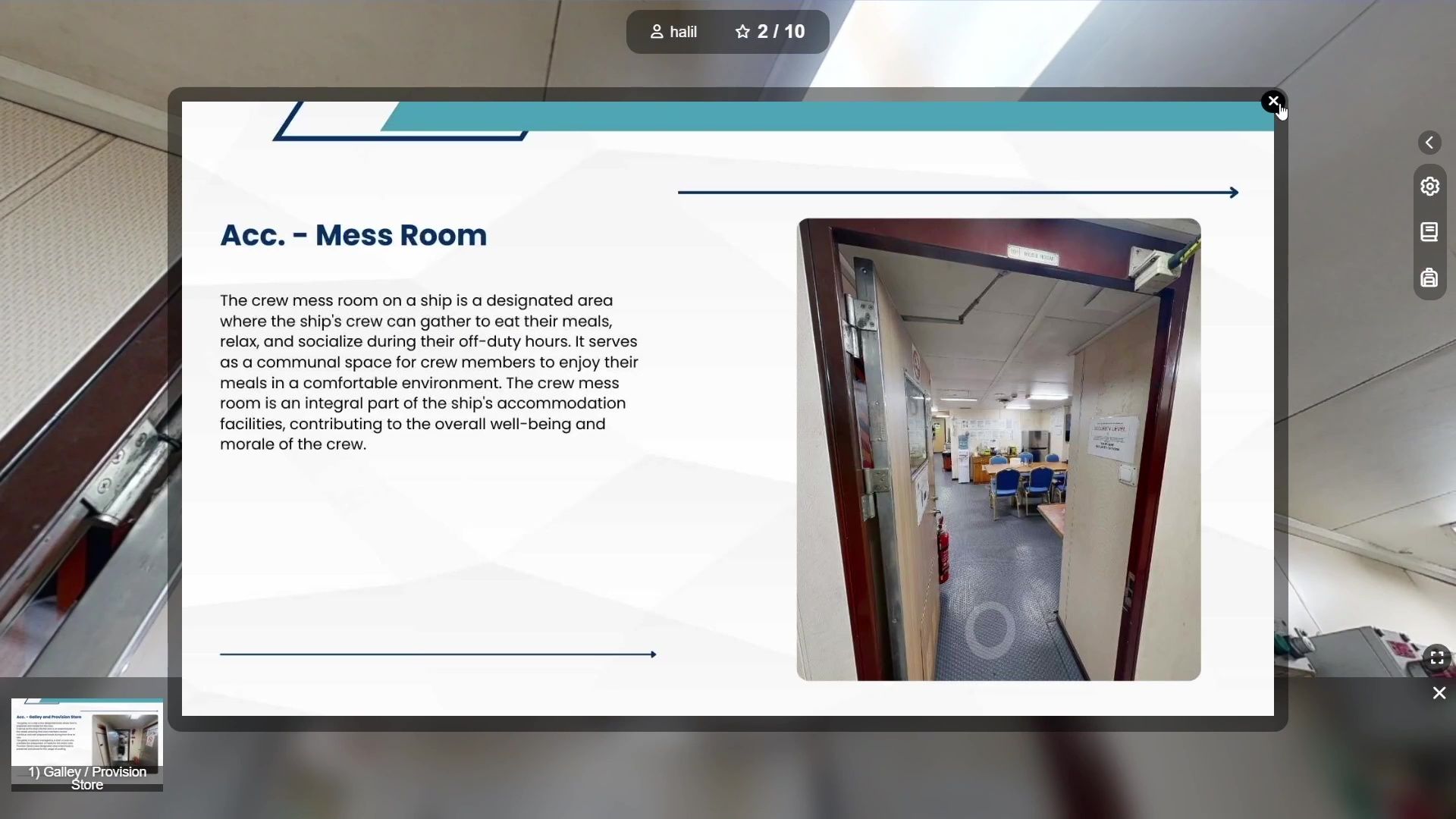
The Necessity of Remote Vessel Management
In the rapidly evolving maritime sector, the ability to manage vessels remotely has transitioned from a convenience to a necessity. The traditional approach to vessel management, characterized by physical inspections, in-person training, and reactive maintenance, is increasingly challenged by the demands of modern maritime operations. This section delves into the pivotal role of Digital Twin technology in addressing these challenges and revolutionizing remote vessel management.
Challenges in Traditional Vessel Management
The maritime industry has long grappled with the complexities of managing a global fleet. Key challenges include:
- Limited Real-time Insight: Traditional methods offer limited visibility into the real-time status of vessels, making it difficult to make informed decisions promptly.
- Crew Training Limitations: Onboarding and training crew members effectively have always been hampered by logistical constraints and the inability to simulate real-world conditions accurately.
- Reactive Maintenance: Maintenance often becomes a reactive process without real-time monitoring, leading to increased downtime and operational costs.
Digital Twin as a Solution
Digital Twin technology emerges as a transformative solution to these challenges by offering a digital approach to vessel management. Here’s how it changes the game:
Enhanced Decision-making:
With a digital replica, decision-makers can access real-time data and insights about the vessel's status, environment, and performance, enabling proactive and informed decisions.
Advanced Crew Training:
Digital Twins provides an immersive and interactive platform for crew training and familiarization, allowing crew members to explore and interact with the vessel virtually before they board.
Predictive Maintenance:
By continuously monitoring the vessel's condition, Digital Twins enables predictive maintenance, identifying potential issues before they escalate and optimizing maintenance schedules.
The Importance of Real-time Data and Insights
At the heart of Digital Twin technology lies the power of data. Real-time data collection and analysis are crucial for:
- Operational Efficiency: Optimizing routes, fuel consumption, and load distribution based on real-time environmental conditions and vessel performance.
- Safety Enhancements: Identifying and mitigating risks proactively to ensure the safety of the crew and the vessel.
- Regulatory Compliance: Ensuring vessels comply with international regulations and standards by monitoring emissions, waste management, and other environmental impacts.
Transforming Remote Vessel Management
Digital Twin technology is not just an incremental improvement; it's a paradigm shift in how vessels are managed. It enables a level of control and insight that was previously unimaginable, transforming remote vessel management into a strategic advantage. By integrating Digital Twins into their operations, maritime businesses can achieve:
- Operational Excellence: Streamlining operations for maximum efficiency and cost-effectiveness.
- Enhanced Competitiveness: Leveraging technology to stay ahead in a competitive market.
- Sustainability Goals: Contributing to environmental sustainability through optimized operations and reduced carbon footprint.
In conclusion, the necessity of remote vessel management in today's maritime industry cannot be overstated. Digital Twin technology offers a comprehensive solution, addressing the inherent challenges of traditional methods and paving the way for a more efficient, safe, and sustainable future. As we continue to explore its potential, the maritime industry stands on the brink of a new era of digitalization and innovation.
Key Benefits of Digital Twin Technology in Maritime Operations
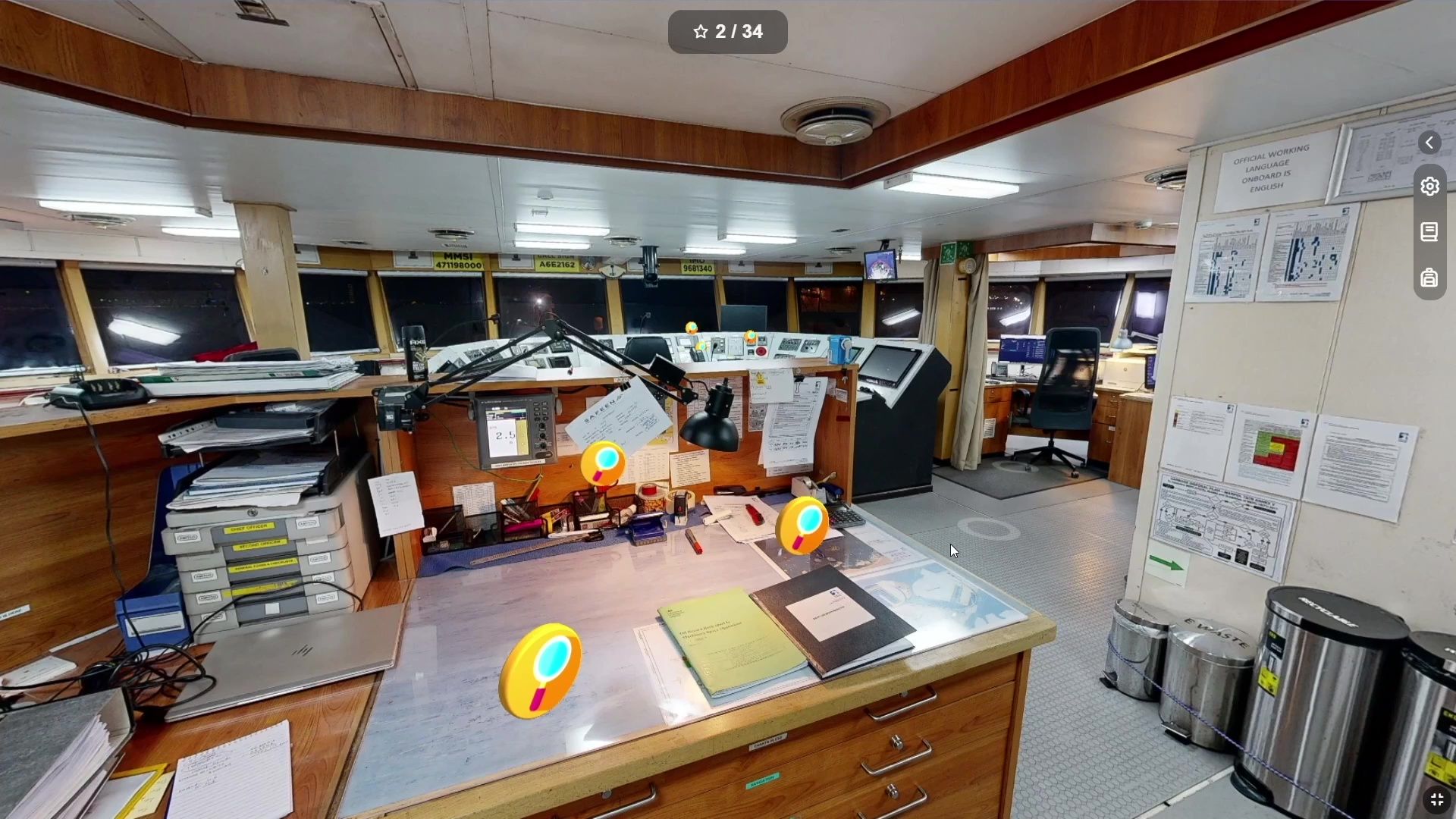
Implementing Digital Twin technology in maritime operations brings forth many benefits that address the core challenges of vessel management, crew training, and operational efficiency. This technology is revolutionizing how the maritime industry approaches these critical areas, offering solutions that were once deemed impossible. Let’s explore the key benefits of Digital Twin technology and its impact on maritime operations.
Enhanced Crew Familiarization
The safety and efficiency of maritime operations heavily depend on the crew's familiarity with their vessel. Digital Twin technology offers a virtual yet realistic environment where crew members can navigate the intricacies of their vessel, familiarizing themselves with its layout, safety protocols, and operational procedures before they set foot on board. This preemptive knowledge significantly reduces onboarding time and enhances overall safety.
- Real-world Application: Virtual walkthroughs and interactive simulations allow crews to experience and interact with every aspect of the vessel, from the engine room to the bridge, ensuring a comprehensive understanding of their working environment.
Operational and Emergency Training
Training for real-life scenarios in a controlled environment is a challenge in maritime operations. Digital Twins provide a solution by simulating operational conditions and emergencies, allowing crews to train, practice, and perfect their responses to potential real-world events without the associated risks.
- Impact on Safety: By practicing emergency responses in a virtual setting, crews can enhance their preparedness for actual emergencies, potentially saving lives and preventing environmental disasters.
Troubleshooting and Predictive Maintenance
Unexpected maintenance issues can significantly impact a vessel’s operational efficiency and safety. Digital Twins offers a proactive approach to maintenance, identifying potential problems before they escalate. This predictive maintenance ensures that repairs are scheduled and performed without interrupting the vessel's operations, reducing downtime and operational costs.
- Predictive Analysis: Continuous monitoring of the vessel's condition through its Digital Twin allows for predictive analysis, highlighting wear and tear on critical components and facilitating timely interventions.
Customized Equipment Training
Each vessel has unique systems and equipment, requiring specialized knowledge and skills. Digital Twin technology enables customized training programs tailored to the specific equipment found on a vessel, ensuring that crews are proficient in their operation and maintenance.
- Targeted Training Sessions: These sessions can focus on particular areas of interest or concern, such as the propulsion system or navigation equipment, allowing for deeper learning and understanding.
Decision-making and Strategic Planning
Digital Twin technology provides a comprehensive overview of a vessel's status and performance, empowering decision-makers with the information needed to make strategic decisions. This includes optimizing routes based on weather conditions, adjusting operations to enhance efficiency, and planning for future modifications or upgrades.
- Operational Insights: The ability to simulate different scenarios and their outcomes enables operators to strategize effectively, ensuring optimal performance and profitability.
Adopting Digital Twin technology in the maritime industry marks a significant step forward in addressing longstanding challenges. The benefits are clear and compelling, from enhancing crew training and operational safety to optimizing maintenance schedules and supporting strategic decision-making. As this technology continues to evolve and integrate with other innovations, its potential to transform maritime operations grows, promising a future where digital and physical worlds converge for the betterment of the industry.
Maritime Trainer's Approach to Implementing Digital Twin Technology
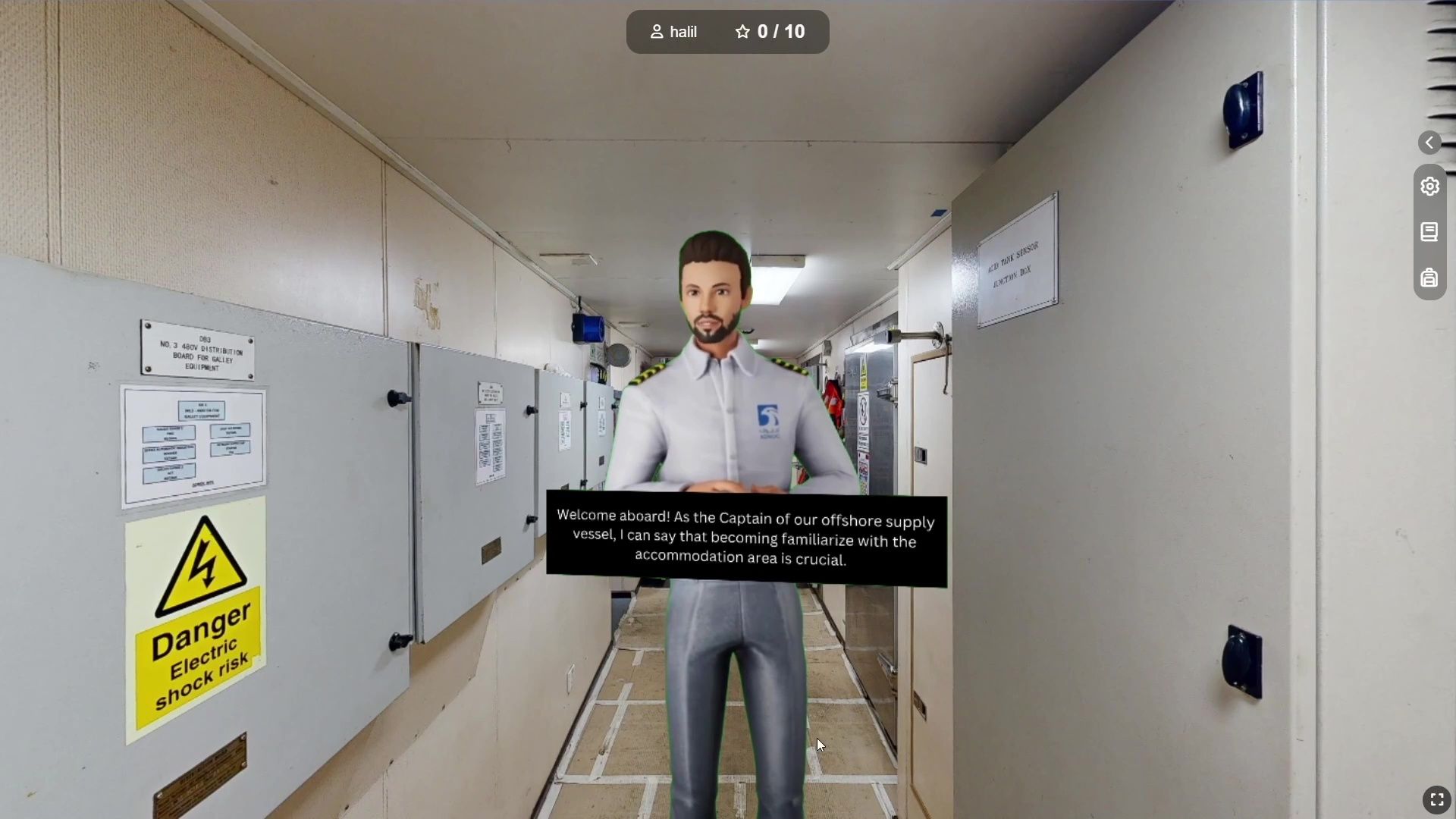
Maritime Trainer, a leader in cutting-edge maritime education and training solutions, has embarked on an ambitious journey to integrate Digital Twin technology into its comprehensive training modules. This initiative represents a strategic enhancement of Maritime Trainer's offerings, aligning with its commitment to provide industry-leading training solutions. Here's how Maritime Trainer is setting the standard for the implementation of Digital Twin technology in maritime training.
Step 1: Defining Educational Objectives
- Tailored Training Goals: Maritime Trainer begins by identifying specific training objectives that Digital Twin technology can achieve, such as advanced emergency response tactics, operational efficiency improvements, and comprehensive equipment handling skills.
- Needs Analysis: Conducting a thorough needs analysis, Maritime Trainer pinpoints the areas where Digital Twin technology can most significantly impact learners' outcomes, focusing on bridging the gap between theoretical knowledge and practical application.
Step 2: Collaborative Development with Industry Experts
- Partnership with Tech Developers: Maritime Trainer collaborates closely with leading Digital Twin technology developers, ensuring the solutions are perfectly tailored to the maritime sector's unique needs.
- Customization for Real-World Scenarios: The development process involves customizing the Digital Twin models to reflect actual vessel operations, incorporating real-world scenarios crew members will likely encounter.
Step 3: Integration into the Curriculum
- Seamless Curriculum Integration: Maritime Trainer integrates Digital Twin technology seamlessly into its curriculum, enhancing traditional learning methods with interactive, real-time simulations.
- Blended Learning Approach: By adopting a blended learning approach, Maritime Trainer combines conventional instructional methods with innovative Digital Twin simulations, offering learners a holistic and immersive educational experience.
Step 4: Empowering Instructors and Learners
- Instructor Training: Maritime Trainer ensures its instructors are fully trained and comfortable with the new technology, enabling them to guide and support learners effectively.
- Learner Engagement: The implementation engages learners through interactive Digital Twin simulations, encouraging active participation and facilitating a deeper understanding of complex maritime operations.
Step 5: Continuous Evaluation and Enhancement
- Feedback Loops: Maritime Trainer establishes robust feedback mechanisms to gather insights from instructors and learners, allowing for continuous improvement of the Digital Twin technology integration.
- Adaptation to Technological Advancements: Keeping pace with technological advancements, Maritime Trainer regularly updates its Digital Twin models and training modules to ensure they remain at the forefront of maritime education.
Maritime Trainer's strategic implementation of Digital Twin technology exemplifies its dedication to providing innovative and effective training solutions in the maritime industry. Through this initiative, Maritime Trainer enhances the quality of maritime education and significantly contributes to the safety, efficiency, and readiness of maritime professionals worldwide. As Digital Twin technology evolves, Maritime Trainer remains committed to exploring new ways to leverage this powerful tool, ensuring that maritime professionals are well-equipped to meet the challenges of modern sea navigation and vessel management.
The Fusion of Digital Twin and VR Technology
The maritime industry is increasingly adopting innovative solutions to enhance training and operational efficiency, with Digital Twin technology and Virtual Reality (VR) being at the forefront of this transformation. By combining Digital Twin technology with VR, maritime trainers, and operators can create a 3D environment that simulates not only the physical aspects of a vessel but also its dynamic operations in real time. This integration offers a highly immersive and interactive training experience, allowing crew members to explore and interact with their vessel in a virtual space.
How We Use Digital Twin and VR Technology
The use of Digital Twin technology in conjunction with VR headsets enables users to step into a three-dimensional representation of their vessel, providing a platform for both training and operational planning. This approach allows for a variety of training scenarios to be conducted safely and efficiently, including emergency response drills, equipment operation, and maintenance procedures. It also facilitates remote vessel management, enabling operators to monitor vessel performance and make informed decisions from any location.
Benefits of Integrating Digital Twin with VR
Enhanced Training Experience: The immersive nature of VR combined with the accuracy of Digital Twin technology offers an unparalleled training experience. Trainees can navigate through the virtual vessel, interact with equipment, and respond to simulated scenarios, which significantly improves learning outcomes and retention.
Operational Safety
Through realistic simulations of emergency situations, crew members can practice and perfect their response strategies without the risks associated with real-life drills. This not only enhances safety onboard but also prepares the crew for a wide range of potential incidents.
Cost Efficiency:
Virtual training eliminates the need for physical presence, reducing travel and accommodation expenses associated with traditional training methods. It also minimizes the downtime of vessels by allowing crews to train remotely.
Customization and Flexibility:
Digital Twin technology enables the customization of training modules to reflect the specific features and operations of individual vessels. This tailored approach ensures that training is relevant and directly applicable to the crew's daily responsibilities.
Real-time Decision Making:
The integration of Digital Twin technology with VR allows for real-time data analysis and visualization. Operators and trainers can make immediate decisions based on the simulated performance of the vessel and its systems.
Future Outlook
As maritime education and training continue to evolve, the integration of Digital Twin technology with VR is set to become a standard practice. This combination not only revolutionizes the way training is conducted but also enhances the overall safety, efficiency, and readiness of maritime operations. With ongoing technological advancements, the potential applications of Digital Twin and VR in the maritime industry are bound to expand, further cementing their role in shaping a digitally advanced maritime future.
Future Trends in Digital Twin Technology and Maritime Trainer's Vision
As Maritime Trainer advances its implementation of Digital Twin technology, it's imperative to address the challenges that come with such cutting-edge innovation. This section outlines potential obstacles in adopting Digital Twin technology and Maritime Trainer's strategies to overcome them, ensuring the technology's successful integration into maritime training programs.
Identifying and Overcoming Challenges
Technical Complexity: The complexity of Digital Twin technology can pose a significant challenge, requiring specialized knowledge and skills for effective implementation and use.
Solution: Maritime Trainer is committed to providing comprehensive training for instructors and technical teams, equipping them with the necessary expertise to effectively manage and utilize Digital Twin technology.
Data Security and Privacy: The extensive data collection and processing in Digital Twin technology raises concerns about data security and privacy.
Solution: Implementing state-of-the-art cybersecurity measures and data protection protocols ensures the integrity and confidentiality of all data within Maritime Trainer's Digital Twin platform.
Integration with Existing Systems:
Integrating Digital Twin technology with existing training systems and curricula can be challenging.Solution: Maritime Trainer prioritizes the development of interoperable solutions and works closely with technology partners to ensure smooth integration, minimizing disruption to existing training programs.
Cost Implications: Digital Twin technology's initial setup and ongoing maintenance require significant investment.
Solution: Maritime Trainer adopts a phased implementation approach, starting with pilot projects to demonstrate value and ROI before scaling up, ensuring cost-effective deployment.
Enhancing Maritime Training through Digital Twin Technology
With a clear understanding of the challenges and strategic solutions, Maritime Trainer is ready to harness Digital Twin technology's benefits fully. The impact on maritime training is profound, offering:
- Realistic and Engaging Training Experiences: By simulating real-world scenarios and vessel operations, learners can engage in immersive training experiences that significantly enhance learning outcomes.
- Data-Driven Insights for Personalized Learning: Leveraging the data analytics capabilities of Digital Twin technology allows Maritime Trainer to offer personalized learning experiences, tailoring training to meet individual learner needs and preferences.
- Increased Operational Safety: Through advanced simulations and predictive analytics, Digital Twin technology enables learners to practice and prepare for emergencies, enhancing safety protocols and operational readiness.
- Global Training Accessibility: Digital Twin technology facilitates remote training capabilities, enabling Maritime Trainer to offer its world-class training programs to a global audience, breaking down geographical and logistical barriers.
Integrating Digital Twin technology into maritime training represents a significant leap forward in how maritime professionals are prepared for the challenges of modern seafaring. While the path to full implementation may be fraught with challenges, Maritime Trainer's proactive and strategic approach ensures that these obstacles are addressed and turned into opportunities for further innovation. As Maritime Trainer continues to pioneer the use of Digital Twin technology in maritime training, it sets a new standard for excellence, safety, and efficiency in the industry, paving the way for a future where digital and physical realms merge to create unparalleled training experiences.
Conclusion: Charting the Course Towards a Digitally Enhanced Maritime Future with Maritime Trainer
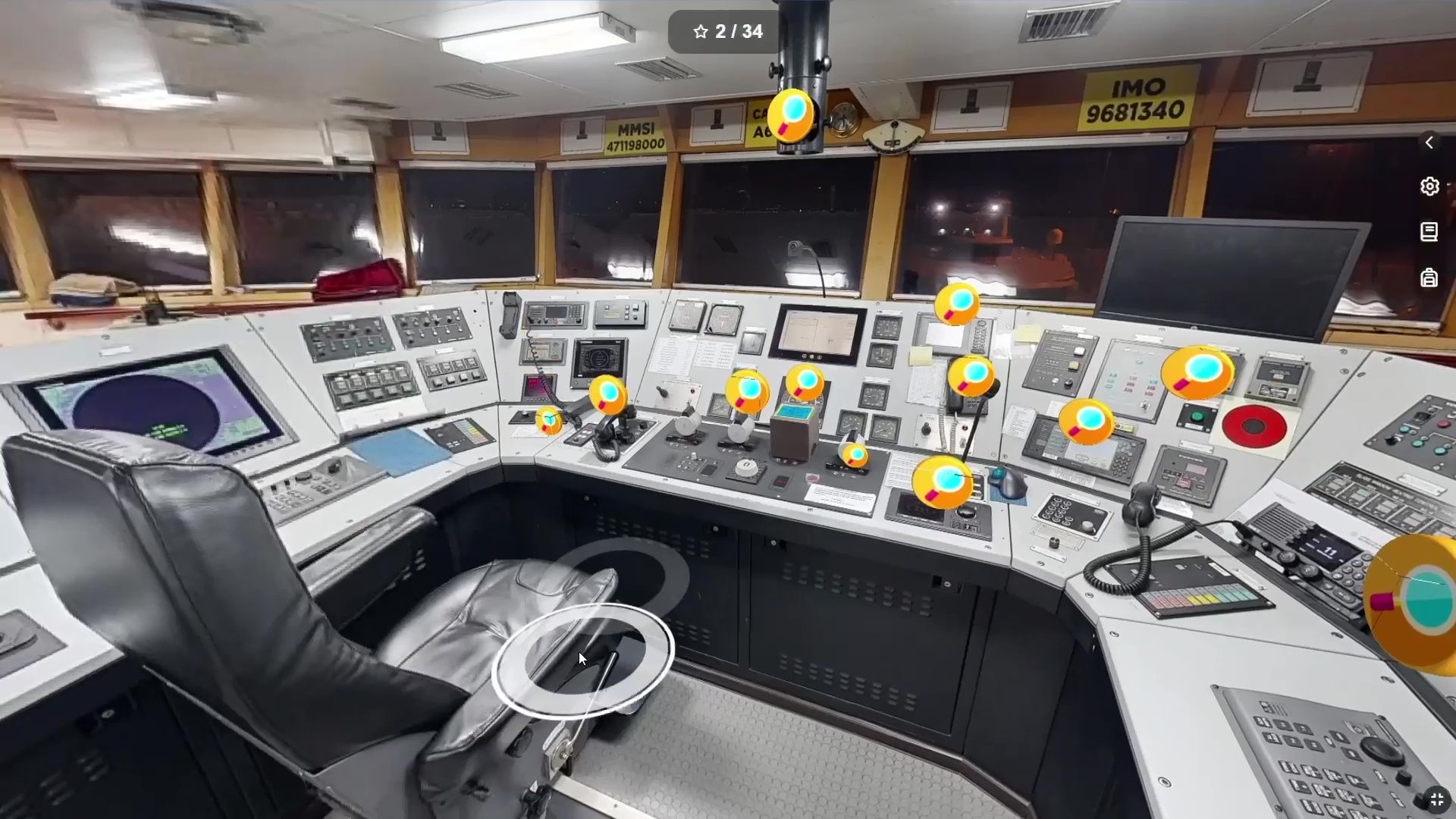
As we conclude our exploration of Digital Twin technology and its transformative impact on the maritime industry, it's clear that we stand at the brink of a new era in maritime training and operations. At the forefront of this revolution, Maritime Trainer is not just adapting to these changes but actively shaping the future of maritime education and operational excellence.
The journey into integrating Digital Twin technology within Maritime Trainer's curriculum and operational strategies showcases a commitment to innovation, safety, and efficiency. By addressing challenges head-on and leveraging emerging trends, Maritime Trainer is pioneering a path that others in the maritime industry will undoubtedly follow.
The Impact of Digital Twin Technology
Adopting Digital Twin technology marks a significant milestone in maritime training, offering unprecedented realism, interactivity, and insight. This technology enables maritime professionals to hone their skills, understand their vessels deeply, and prepare for a wide range of scenarios in a previously impossible way. The benefits extend beyond training, enhancing operational decision-making, maintenance strategies, and, ultimately, the safety and efficiency of maritime operations worldwide.
Maritime Trainer's Vision
Maritime Trainer's vision is clear: to continue embracing and integrating the latest technological advancements to provide the most comprehensive, realistic, and practical training solutions in the maritime industry. The goal is not just to prepare maritime professionals for the challenges of today but to equip them for the innovations of tomorrow.
Final Thoughts
As we navigate this digital voyage, Maritime Trainer remains dedicated to being your trusted partner, guiding you through the complexities of modern maritime training and operations. Together, we can chart a course toward a safer, more efficient, digitally enhanced maritime future.
The message is clear for maritime professionals, industry leaders, and organizations: the future of maritime training and operations lies in digital transformation. Embracing Digital Twin technology and other innovations is not merely an option but a necessity for those who wish to remain competitive and secure in an increasingly complex and digital world.
Contact us





